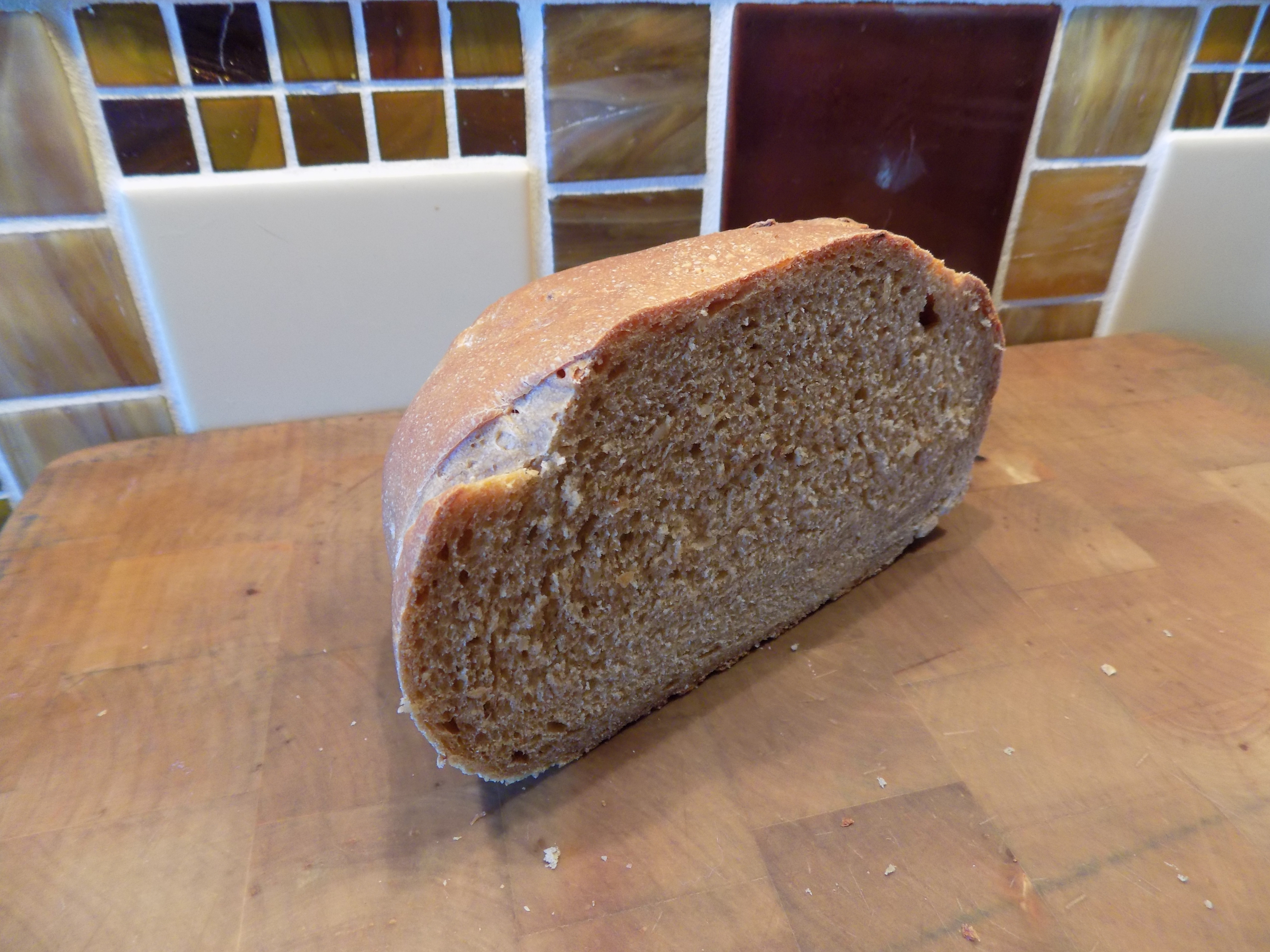Now I know, most of you don’t bake bread every week. Me either. I should, for the sake of cost and nutritional purity. But if I baked bread every week, I would eat more bread every week. You see, bread is my biggest downfall. I can gladly forgo most baked goods, but not bread. I’m hooked and it’s my grandmothers’ fault!
As a child I really had 2 sets of care givers. My maternal grandparents lived in a home on the same piece of property as my parents. So even though both of my parents worked, my grandparents were always in attendance. And after school snacks were habitually available in my grandmothers’ kitchen.
My favorite snack was hot-out-of-the-oven homemade bread liberally spread with home churned butter. Oh my friends, those were the days. I can still conjure up the smell of those lovely loaves, always the same, and always perfect.
Now grandma never made fancy breads except at Christmas. (She used cardamom in a delicious braided Christmas bread.) The loaves she made for everyday consumption were your basic white loaf. She would probably be quite skeptical of the various types of flour and other ingredients I use in some of my favorite breads. Like this one. First of all she wouldn’t even know what espresso powder was, much less espresso itself! Nor would she understand why I would put onion in bread dough. Even molasses or beer might cause her to lift an eyebrow. And after she took a bite, I’m pretty sure she would immediately decide that I was a complete bread baking failure. After all, tastes were simpler 60 years ago. And even though my grandmother was a college graduate, she was still at heart a farm girl from the mid-west. Her spice collection consisted of salt, pepper, cinnamon, nutmeg, cardamom, and possibly paprika. That’s it! No savory herbs like dried oregano, thyme, or rosemary. She didn’t even use fresh parsley. She did grow dill for pickles, but as far as I can remember, that’s about it. So like I said, simpler times and definitely simpler tastes.
And even though she would have been in her early 60s when she was allowing me to cut both crusts off her newly baked loaves for my after school snack, she never advanced to using dried herbs in her cooking, even though I believe they were starting to become available through the Watkins man. (I used to love when he came to visit.) So most definitely she would not have liked or understood this bread!
But I do, and Mr. C. does, and so did our guests at our last JazzVox pre-concert meal.
So even though my dear grandmother who first introduced me to bread baking would frown on me even suggesting that you might enjoy this bread, make it anyway. After all, respecting our elders only goes so far.
- 2 c. light rye flour
- 1½ c. (1 bottle) room temperature amber beer
- 2 pkgs. or 5 tsp. active dry yeast
- 2 T. molasses
- 1 T. kosher salt
- ½ tsp. espresso powder
- 2 T. vegetable oil, plus more for coating the dough ball
- 1 egg
- 1 T. chopped dehydrated onion, opt.
- 3 c. bread flour, or as much as needed
- cooking spray
Combine rye flour, beer, and yeast in the bowl of your stand mixer. Cover bowl with plastic wrap. Set on a counter overnight. (Don’t refrigerate.)
The next day, add molasses, salt, espresso powder, oil, egg, and dehydrated onion; beat with dough hook until smooth. Add enough white bread flour to make a soft dough. Knead for about 5 minutes.
Pour a small amount of oil over the dough, and using your hands, coat the bread with oil and round into a ball. Cover with plastic wrap and let rise for at least an hour, or until doubled. (Can take up to two hours.)
Punch down and divide dough in half. Shape into round loaves, and place on a large baking sheet lightly sprayed with cooking spray. Cover the loaves and let rise for 45 minutes.
Using a serrated knife, cut a large shallow X on the top of each boule just before placing in the oven. (Just in case you didn’t know, bread baked into a round loaf is most often referred to as a boule.)
Bake in a pre-heated 400 degree oven for 30 minutes, or until the internal temperature reaches 200 degrees. Remove from oven and cool on racks. Best if allowed to rest uncovered overnight.

